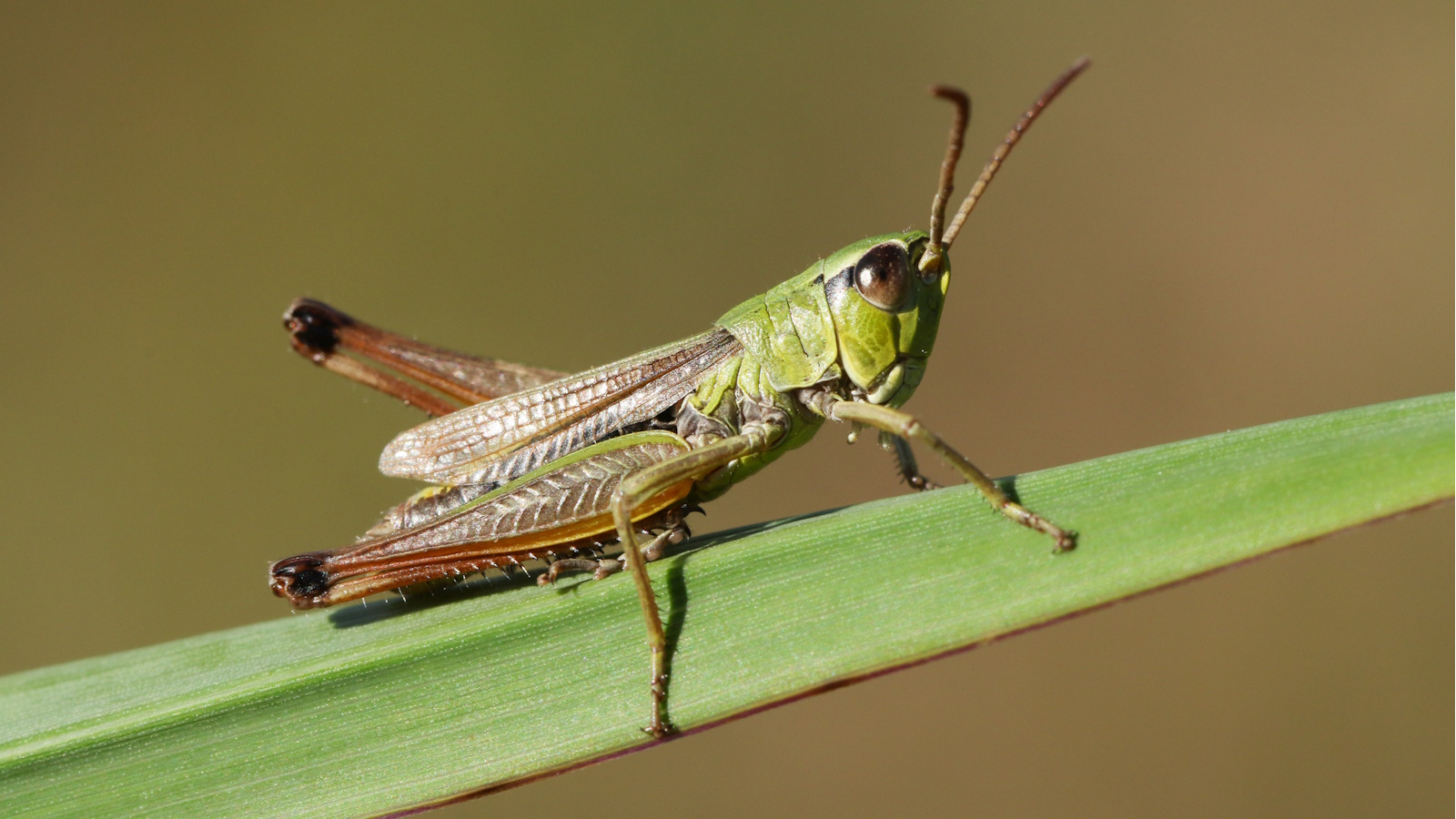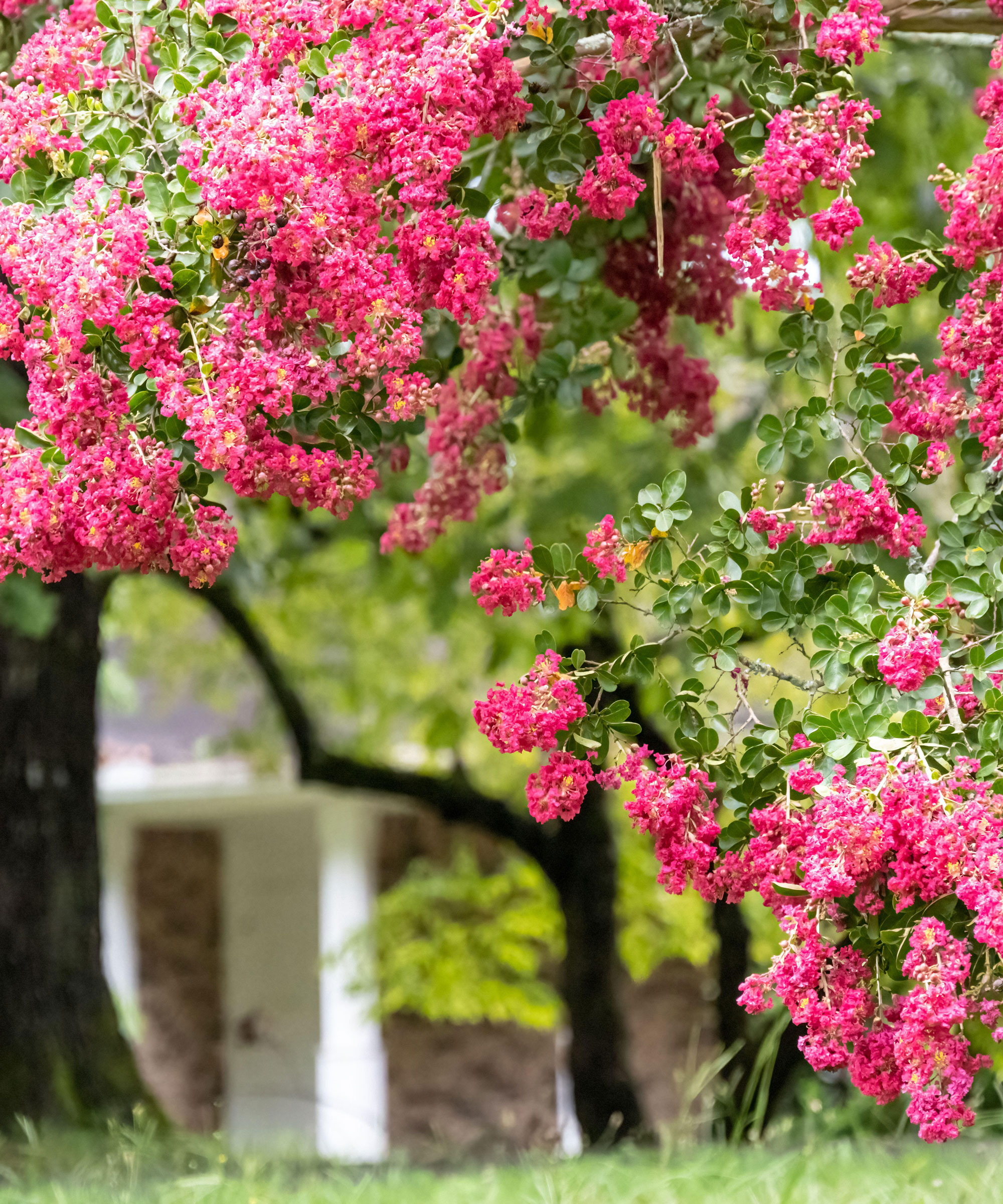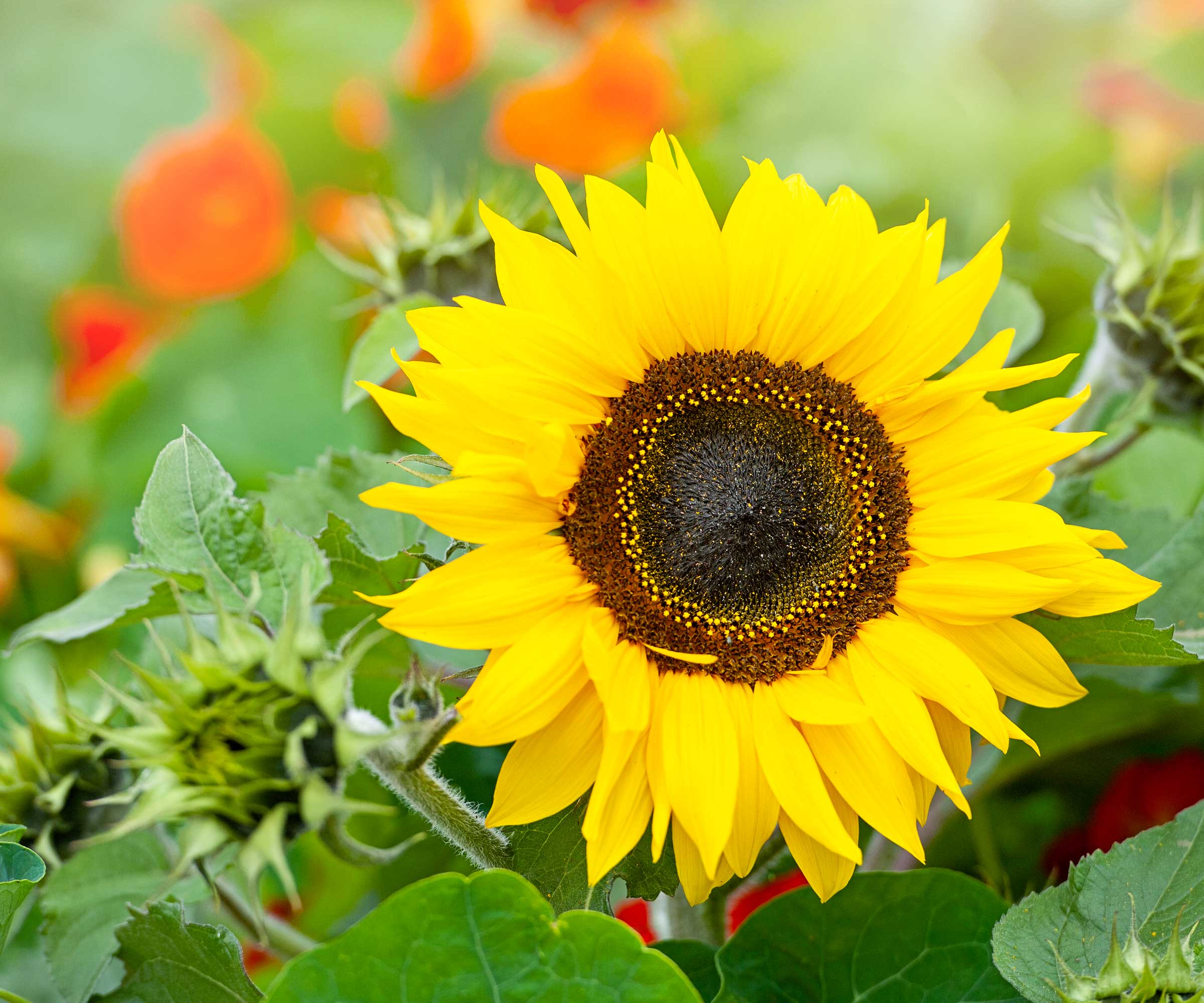Grasshopper repellent plants – 5 natural deterrents to keep these leaf eating critters away from your yard
It's a good idea to get on top of a grasshopper problem if you start to notice holes in your plants


There's a never-ending list of pests to become familiar with when you take on the hobby of gardening, and it can often be hard to distinguish what pest is causing the problem in your yard. If you're finding bite holes in your leaves and flowers, it might be a sign that grasshoppers are taking residence among your plants.
Just like repelling boxelder bugs and planting snail repellent plants, you can make careful planting choices to keep leaf munchers away. Like many pests, grasshoppers are sensitive to strong scents and are less likely to target particular plants. Choosing to have these plants in your yard can create an effective natural deterrent.
Not sure where to get started? Don't fret, pest control experts have revealed to us the best grasshopper repellent plants for you to explore and incorporate in your yard.

5 grasshopper repellent plants
Grasshoppers are jumping insects that hop from plant to plant, often found in grass. They eat plant material and if populations aren't controlled, could destroy much of the planting in your backyard. We profile 5 grasshopper repellent plants below that will naturally deter these critters and keep your susceptible plants safe.
1. Forsythia

To start creating a reliable grasshopper repellent barrier, try growing forsythia - a spectacular yellow flowering shrub
'Some flowers have strong repellent properties for grasshoppers and other pests,' notes Chris McNally, pest control expert at JP McHale Pest Management.
Forsythia gives off a scent reminiscent of almonds, sensitive to grasshoppers and discouraging them from coming near. It's also one of the best fast-growing hedges so that you can quickly build up a repellent barrier in your yard.
Design expertise in your inbox – from inspiring decorating ideas and beautiful celebrity homes to practical gardening advice and shopping round-ups.
They grow best in US hardiness zone 4 to zone 9, thriving in full sun and you should prune forsythia mid-spring to keep it blooming for longer.
Find forsythia shrubs online, like this Lynwood Gold Forsythia Shrub from Fast Growing Trees.

Chris is a pest control expert at JP McHale Pest Management. He has special knowledge on tree and lawn care.
2. Crepe myrtle

For another fast-growing flowering tree that adds color to your yard and encourages grasshoppers to stay away, opt for beautiful crepe myrtle. Some varieties of these trees with magenta blooms are ideal for a fragrant garden, emitting a floral scent that grasshoppers dislike.
Crepe myrtle is among the plants that grasshoppers aren't attracted to, so choosing it as a companion plant to those more susceptible is an effective repellent solution. Alongside a shrub like forsythia, you can strengthen your repellent barrier.
Grow crepe myrtle in US hardiness zone 6 to zone 9 in full sun for blooms that last from spring to summer. Take care to prune crepe myrtle after blooming to keep your tree in healthy condition and encourage returning flowers.
You can find the right crepe myrtle tree for your outdoor space online, like this Twilight Crepe Myrtle from Fast Growing Trees.
3. Rosemary

It's widely known fact that aromatic herbs are some of the most effective pest repellent plants.
'Rosemary works as grasshopper repellent due to its intense scent, which grasshoppers are deterred by,' says Rocky Beninato, pest control expert and founder at Quality Affordable Pest Control. 'Thankfully, these plants smell good to (most) people and are also excellent for growing for seasoning food,' he adds.
Rosemary is also often used as a tick repellent plant and a mouse repellent plant, as most pests cannot stand the strong scent of this herb.
It grows best in a sunny position across US hardiness zone 8 and zone 9, and can be bought from supermarkets like this rosemary plant from Walmart.

Rocky is the founder and certified exterminator at Quality Affordable Pest Control based in Toronto and the surrounding areas.
4. Sage

Just like rosemary, growing sage to repel pests is an effective natural deterrent. Like repelling other pests from your yard, the strong scent of sage will discourage the presence of grasshoppers.
It makes a great lavender companion plant to strengthen your repelling efforts, as lavender is also an aromatic herb that keeps different pests away. In fact, creating a herb garden can help deter grasshoppers further, by creating an area of your yard full of smells too sensitive for them to handle.
Sage likes to grow across US hardness zone 4 to zone 10, thriving in a warm and sunny location. You can also start growing sage indoors to transplant outdoors as it gets warmer, using these sage plants from Walmart.
5. Sunflowers

Perhaps the most cheerful summer flower, but one that helps to keep pests away, growing sunflowers can benefit your yard in more way than one. Unlike fragrant plants that discourage grasshoppers, sunflowers work to deter them in a different way.
'Try planting a border of 'trap plants' around your garden. This would typically be taller ornamental grasses to which grasshoppers are naturally drawn, distracting them from plants you wish to protect,' notes Chris.
Sunflowers are among the trap plants you can use to deter grasshoppers away from other plants you want to protect, as they like to feed on these flowers. 'Grasshoppers are attracted to sunflowers and enjoy eating them,' notes Rocky.
Try planting sunflowers and other trap plants in an area of your yard that you don't mind drawing grasshoppers to.
You can grow sunflowers by harvesting sunflower seeds or purchasing these sunflower seeds from Amazon. They will grow across many different US hardiness zones, so long as you provide them with plenty of sunlight.
FAQs
Which plants do grasshoppers eat?
Grasshoppers will feed on a range of leafy plants and some flowers. Some of the most common targets include crops like lettuce and carrots, as well as different grasses, sunflowers and other tender blooms. It can be a good idea to put some precautions in place to protect susceptible plants, such as choosing repellent companion plants.
How can I get rid of grasshoppers in my yard?
As well as planting grasshopper repellent plants, experts recommend encouraging natural predators to your backyard to help control grasshopper populations.
'Installing and maintaining a bird feeder will attract birds that often predate on grasshoppers,' Chris McNally, pest control expert at JP McHale Pest Management. 'Additionally, having a wide variety of plants in your garden will attract numerous insects that prey on grasshoppers,' he adds.
Grasshoppers can become a nuisance if they feed on your plants and crops, but using these repellent plants can help to naturally deter them from your yard and keep susceptible plants safe from damage.
If you have a bigger grasshopper problem and are feeling stuck with what to do, you might find our expert guide to how to get rid of grasshoppers helpful.

Tenielle is a Gardens Content Editor at Homes & Gardens. She holds a qualification in MA Magazine Journalism and has over six years of journalistic experience. Before coming to Homes & Gardens, Tenielle was in the editorial department at the Royal Horticultural Society and worked on The Garden magazine. As our in-house houseplant expert, Tenielle writes on a range of solutions to houseplant problems, as well as other 'how to' guides, inspiring garden projects, and the latest gardening news. When she isn't writing, Tenielle can be found propagating her ever-growing collection of indoor plants, helping others overcome common houseplant pests and diseases, volunteering at a local gardening club, and attending gardening workshops, like a composting masterclass.